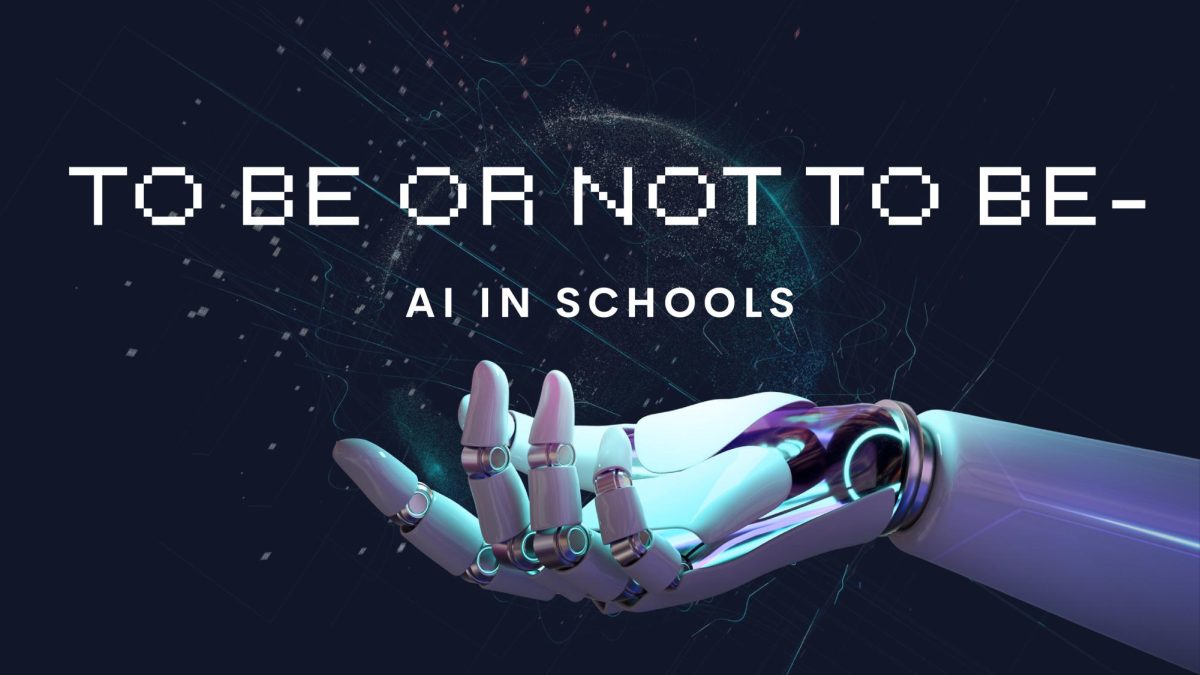In recent years, artificial intelligence, also commonly referred to as AI, has become a more relevant topic. AI is used in daily life when using social media, smart home devices, or even in digital navigation systems. AI image generators are included in various platforms, such as Adobe and Canva.
People use programs such as ChatGPT and OpenAI for a variety of purposes, ranging from solving problems to coming up with stories. But with the increase of browsers that have their own AI search engines built in, it is almost impossible for AI to not be prevalent in everyday life.
But how is AI viewed in schools?
In schools, artificial intelligence has its pros and cons. It offers quick and automatic solutions for math problems, satisfies word counts for English essays, and provides answers to fill-in-the-blank questions. But how much of that reflects authentic learning?
AI Should Not Be Used in Schools
Most teachers would probably agree that using AI for homework is considered cheating and academic dishonesty. Luckily,– or not-so-luckily for students – the added help of AI-checkers can almost always distinguish a robot’s work from a student’s work. Plus, after some time, our teachers know how we write.
However, with every benefit of AI, there’s a negative aspect.
To start off, there is the possibility of AI providing the wrong information. A study from Purdue University showed that 52% of answers from ChatGPT were incorrect. Programs like ChatGPT and Microsoft Copilot are built on relaying information they have come across on the web – but not everything on Google or Yahoo is accurate and unbiased. For objective essays especially, using AI could be a risky move.
Additionally, one of the biggest ideas that turn people away from artificial intelligence is that when used in classrooms, students can easily use AI to cheat. There’s also the concern that the availability of AI can cause students to be fully dependent on computers and not learn basic skills and tasks themselves. With every answer provided by a computer, assignments become easier and easier – and comprehension becomes harder.
A giant red flag with artificial intelligence is that once used too much, there’s the chance of students no longer asking questions when they have them. AI provides answers to all the questions students could possibly have. After a while, the need to double-check doesn’t seem as necessary as before. Therefore, AI becomes its own fact-checker – and all information, even the wrong kind, becomes a reliable source.
AI Should Be Used In Schools
Despite the main claims against artificial intelligence used in schools, using AI can be beneficial in other aspects of school life as well. AI can help students create study materials that can assist them in topics they might be struggling to comprehend.
Students also may be busy with extracurricular activities and other personal matters outside of school, so lengthy assignments, projects, and rigorous classes take up all of their time. AI can help support students by shortening the time spent on after school work through summarizing and condensing information, thus giving the student more time to focus on their other assignments or other pressing matters.
An example of this is Notebook LM, a new (and free) AI-generated note and research assistant created by Google. According to the Google Blog, Notebook LM is designed to be a virtual research assistant that can summarize texts, explain complex ideas, and generate new concepts, all based on what the person inserts into the system.
Notebook LM helps by creating a new special feature to study using AI: an audio summary. Through this feature, the user can choose a source and Notebook LM will generate a podcast-style conversation going over the materials provided by the user.
Yet, the list doesn’t stop at Notebook LM. AI helpers like Grammarly can help to improve students’ writing skills. Khan Academy’s Khanmigo can help tutor students in subjects like math and science. Websites like Quizlet help students create flashcards for studying- all with the use of AI.
Not all students may retain information given in the same way that teachers instruct. AI can help give more simplistic explanations and provide students with summaries for questions they may have. AI can tend to each individual student’s needs to help them thrive while learning.
Freshman Alannah Freeman shared her gratitude for AI because it helps her in her studies.
“I think AI has helped a lot [in school] for me and I feel like that’s the main purpose of AI right now, even though sometimes it can be seen as dangerous [in terms of cheating]. I’m really indecisive on stuff, so AI is a good outlet to inform me about things and to come up with ideas,” Freeman said.
AI is not only limited to students, but can also be valuable when it is integrated into teaching. As the 21st century progresses and technology rapidly advances, educators can use AI to their advantage by improving lesson planning, making questions for tests, auto-grading, and creating homework assignments.
According to the U.S Department of Education, educators can also make new opportunities with AI by using AI’s custom features to help disabled or multilingual students. One example of this is speech recognition. Integrating AI into the classroom curriculum can be beneficial in managing students’ growth when learning.
Although AI is mainly frowned upon for being seen as a method or form of cheating that can contribute to students’ lack of work ethic, properly using it as an academic resource tool can help tremendously. It is time for school districts to step into the 21st century and know that AI is a helpful tool for students.
AI can give both students and teachers better opportunities to succeed in each of their respective environments. The future for AI is already here in daily life, and implementing it in schools, rather than restricting it, can lead to a top-quality education for all.









